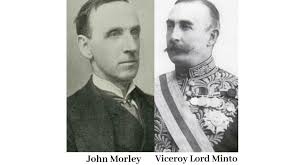The Government of India Act 1909 was a significant piece of legislation that reformed the constitutional structure of British India. The Act was enacted by the British Parliament and was introduced by the then Secretary of State for India, John Morley. The Act was an amendment to the previous Indian Councils Act 1892 and was passed on 10 December 1909. It is also known as the Morley-Minto reform.

The primary purpose of the Government of India Act 1909 was to increase the representation of Indians in the legislative councils and to expand their role in the governance of British India. The Act increased the number of elected members in the Imperial Legislative Council and the Provincial Councils, and also provided for the indirect election of some members.
The Act also introduced a separate electorate system for Muslims, which allowed them to elect their own representatives to the legislative councils. This was a significant step towards recognizing the Muslim community’s political aspirations and gave them a greater say in the governance of India.
Furthermore, the Act also provided for the appointment of an Indian member to the Viceroy’s Executive Council. This was the highest decision-making body in British India, and the inclusion of an Indian member in the council was a significant move towards greater Indian participation in the administration of the country.
The Government of India Act 1909 also made provisions for the establishment of an Indian Law Commission, which was tasked with studying and recommending changes to Indian laws. This commission was composed of Indian legal experts and was an important step towards recognizing and respecting the legal traditions of India.
Another significant feature of the Act was the separation of the executive and legislative functions of the government. This separation was an important move towards greater accountability and transparency in the governance of India.
Despite its many positive features, the Government of India Act 1909 was criticized by some Indian leaders, who believed that it did not go far enough in granting greater political rights to Indians. Some Indian nationalists, such as Bal Gangadhar Tilak, argued that the Act did not go far enough in addressing the grievances of the Indian people and called for more radical reforms.
In conclusion, the Government of India Act 1909 was a significant piece of legislation that introduced important reforms to the constitutional structure of British India. While it did not satisfy all the demands of Indian nationalists, it was an important step towards greater Indian participation in the governance of the country. The Act paved the way for future reforms and played a crucial role in the eventual attainment of Indian independence.
Key provisions of the Government of India Act 1909
- Increased the number of elected members in the Imperial Legislative Council and Provincial Councils
- Introduced the separate electorate system for Muslims, allowing them to elect their own representatives
- Provided for the appointment of an Indian member to the Viceroy’s Executive Council
- Established an Indian Law Commission to study and recommend changes to Indian laws
- Separated the executive and legislative functions of the government
- Increased the power of the legislative councils to debate and pass resolutions
- Provided for the establishment of a public service commission to recruit civil servants based on merit rather than patronage
- Extended the franchise to wealthy and educated Indians
- Gave Indians the right to petition the government on matters of public interest
Important Links